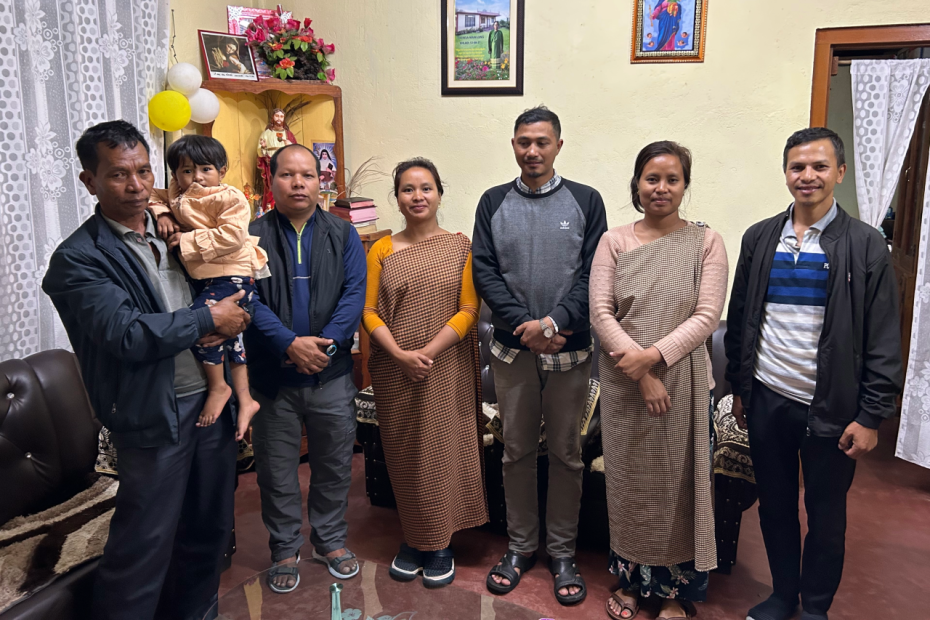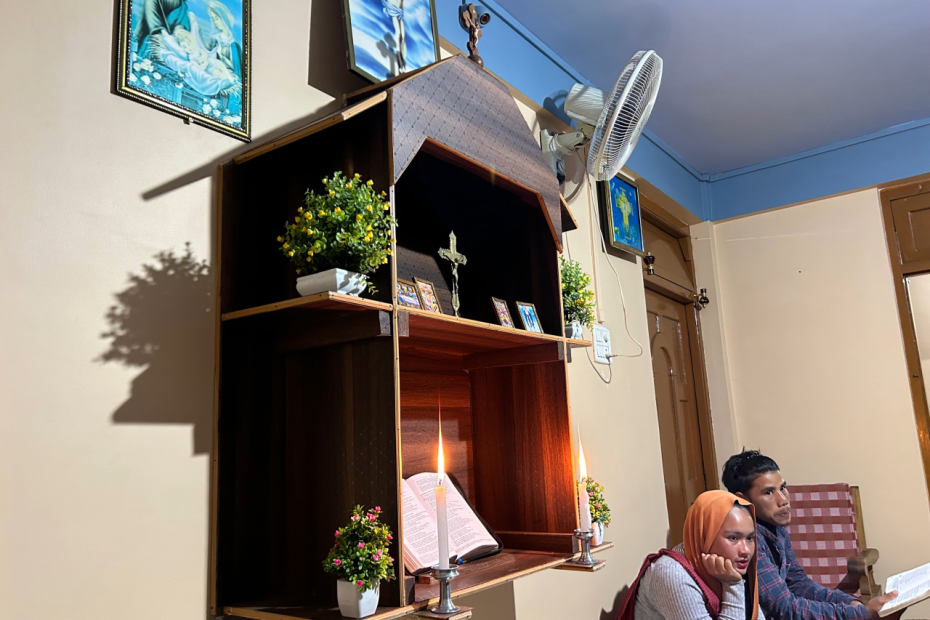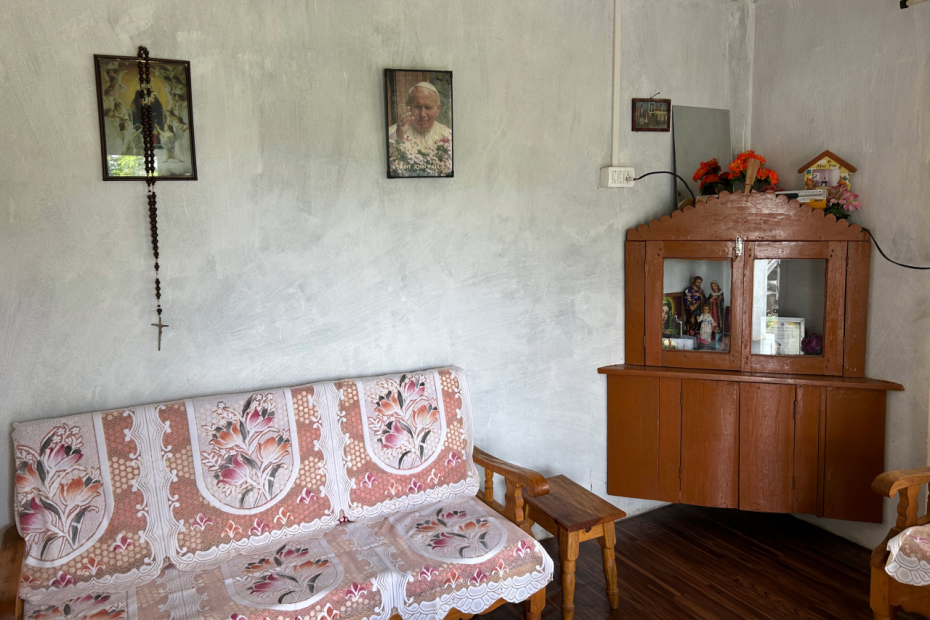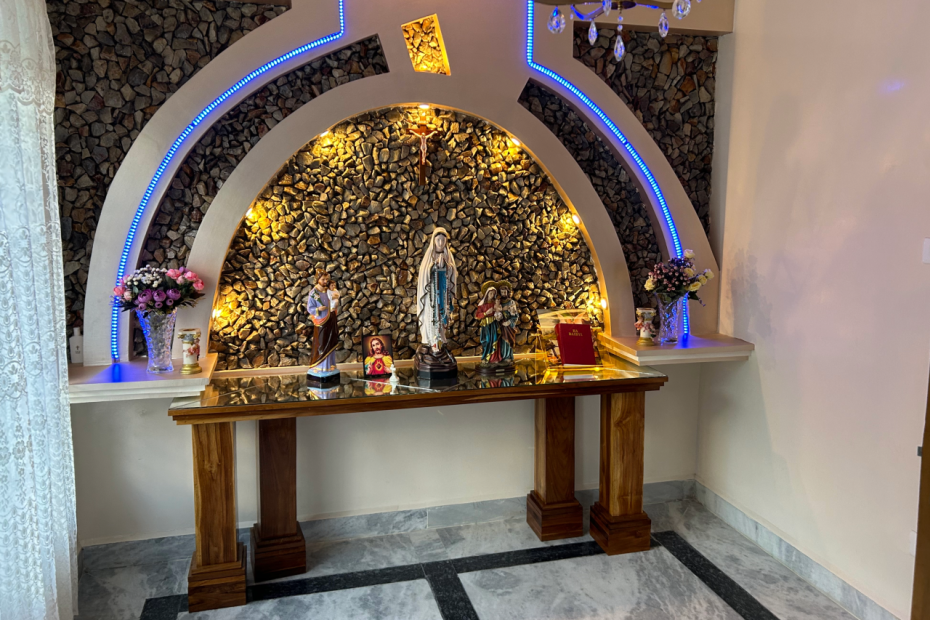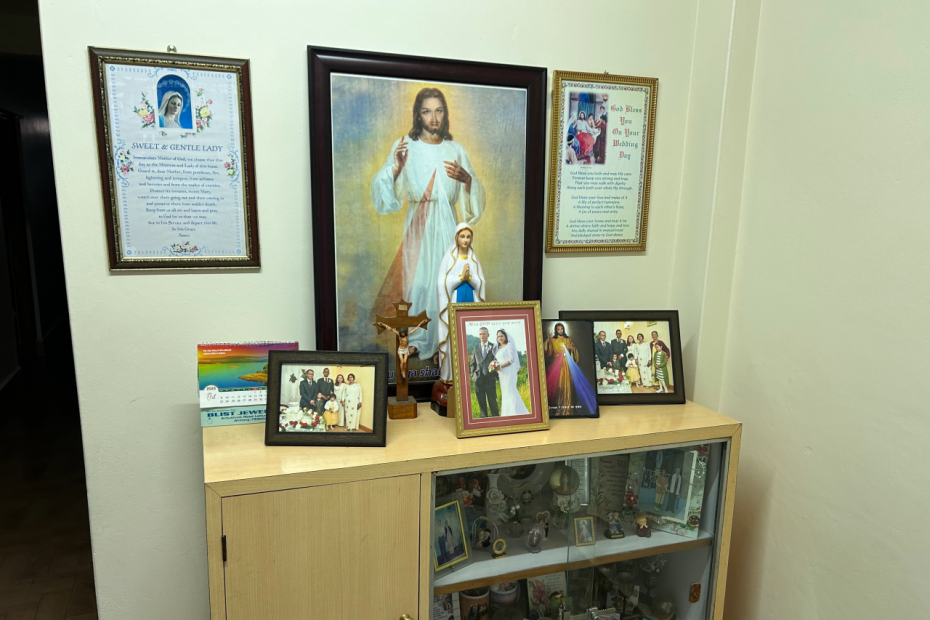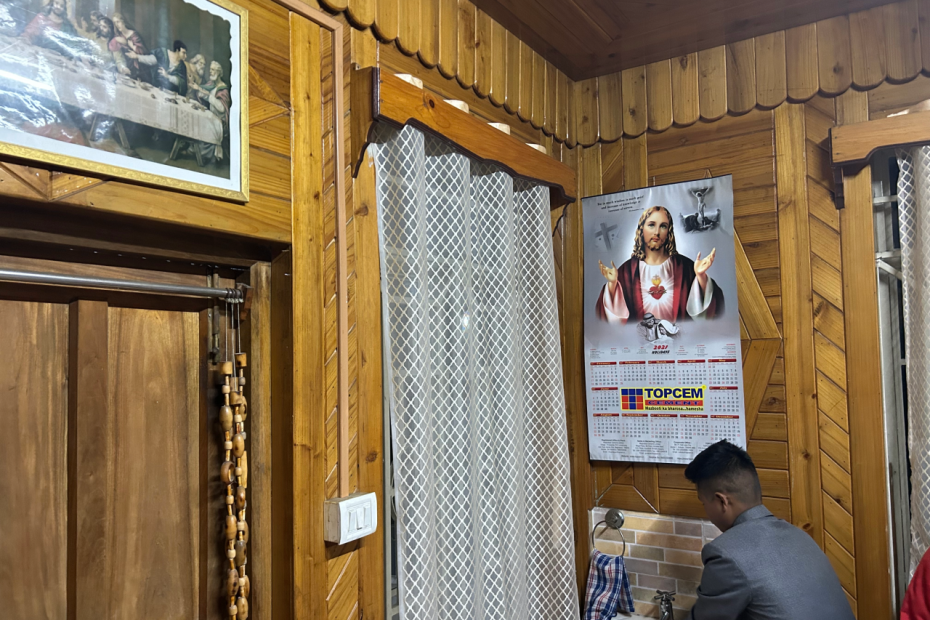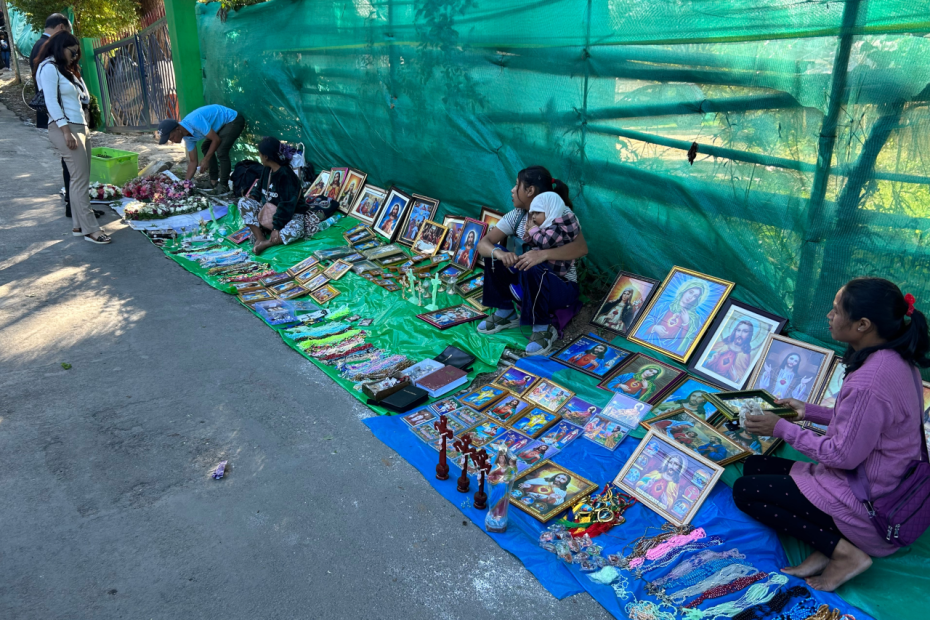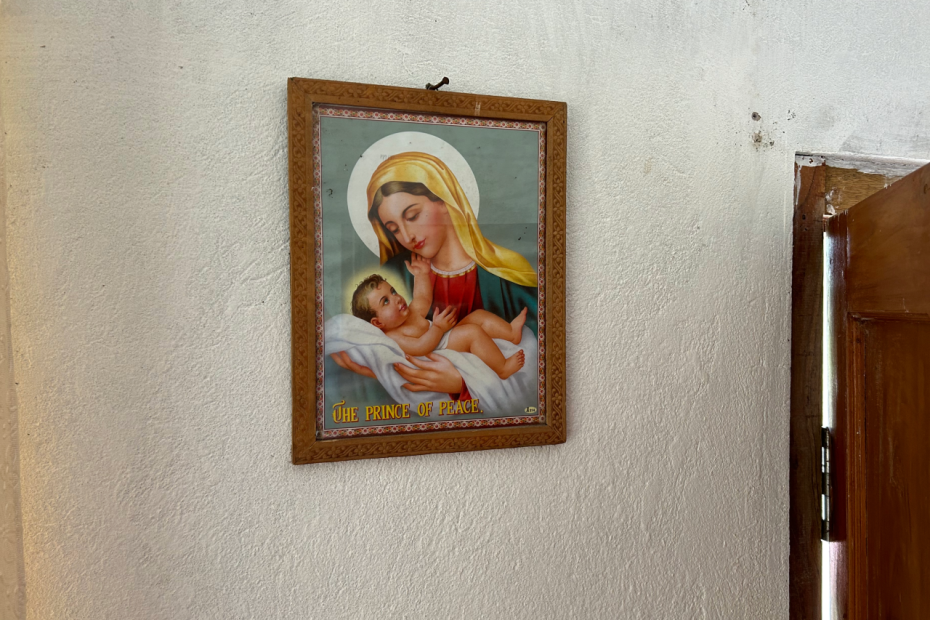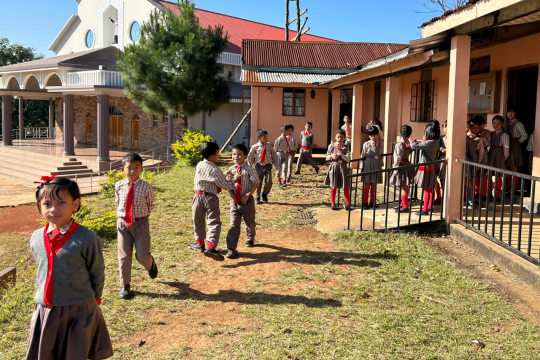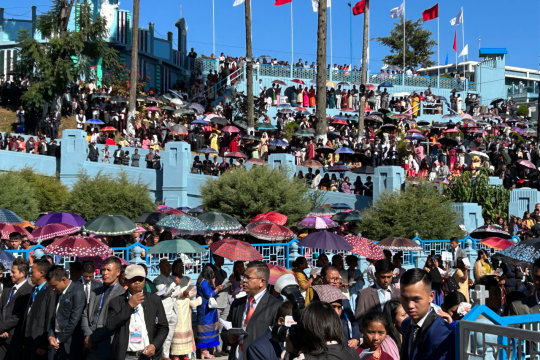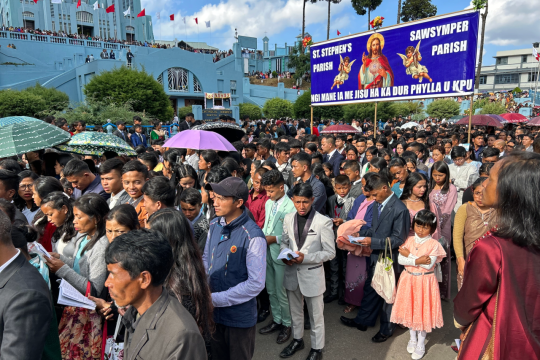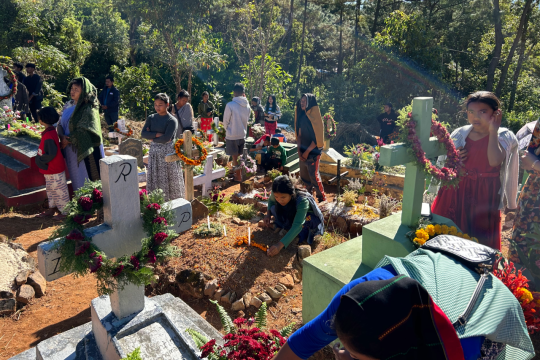As the overview of Khasi and Pnar Catholicism notes, religion before the arrival of Christianity was not organized around temples, churches, or ordained leaders, but was largely home- and clan-based.
Khasi and Pnar Catholicism, on the other hand, is highly organized through very visible institutions like parishes, schools, hospitals, and service agencies. At the same time, the home remains a particularly important place for prayer, echoing traditional religion. Catholic families often decorate and utilize the main room of the house for prayer as well as social purposes. Families host prayer in these rooms for themselves and host neighbors for Sunday evening prayer or prayer during the Marian-dedicated months of May and October. The neighborhood prayers are organized by parish “blocks” led by neighborhood committees.
Interviewees who discussed their prayer habits spoke overwhelmingly more about family or multi-family prayer at home, rather than about solitary prayer there.1 Prayer at home and church consists of shared repetition of prayers they know by heart. Individual intentions are, as they described it, expressed via interior prayers underlying the shared prayer. One woman described the multi-family prayer services as a combination of group prayer and explanation. “When we have the service in the family, we pray the Divine Mercy prayer, then we have other prayers, invoke the Holy Spirit, read the Word of God, and one committee member speaks about what the passage means to him, then we say a spontaneous prayer.”
At home, as at church, the saints play a minimal role in people’s prayer lives, which are more focused on a variety of devotions to Jesus, Mary, God the Father, and the Holy Spirit. The images in people’s homes generally reflected that prioritization.
Though many parishes serve a dozen or more villages, sometimes widely disbursed among the mountains—one priest said that depending on weather it could take him four hours to get to his most remote village—annual home visits by the priest, including a house blessing, are important seasonal events. These typically take place between January to March, before the monsoon season. They are pre-arranged by the village’s catechist so that the entire family can be there. The visits last for 10-15 minutes. The catechist knows the family and keeps the priest abreast of anything he needs to know about. The priest, catechist, and family pray together, the priest blesses the home, and the priest and family have a chance to talk about any worthwhile matters.
- 1The entries in the articles on Meghalaya are based on group and family interviews with dozens of Khasi and Pnar (Jaintia) people in the village of Umbir at the parish of St. Francis Xavier; in two parishes in Shillong; at St. Peter’s Parish, Jalaphet and in the village of Muknor; and in Umoid, all in the Eastern half of Meghalaya. As is fitting for Khasi culture, all of the interactions were with at least two people, usually 6 or more. Interviews were conducted in English, Khasi, Pnar, or some combination, made possible with help from a number of local translators. Traditional religion, while likely not static, is an ongoing tradition here, not a set of practices lost to history.
